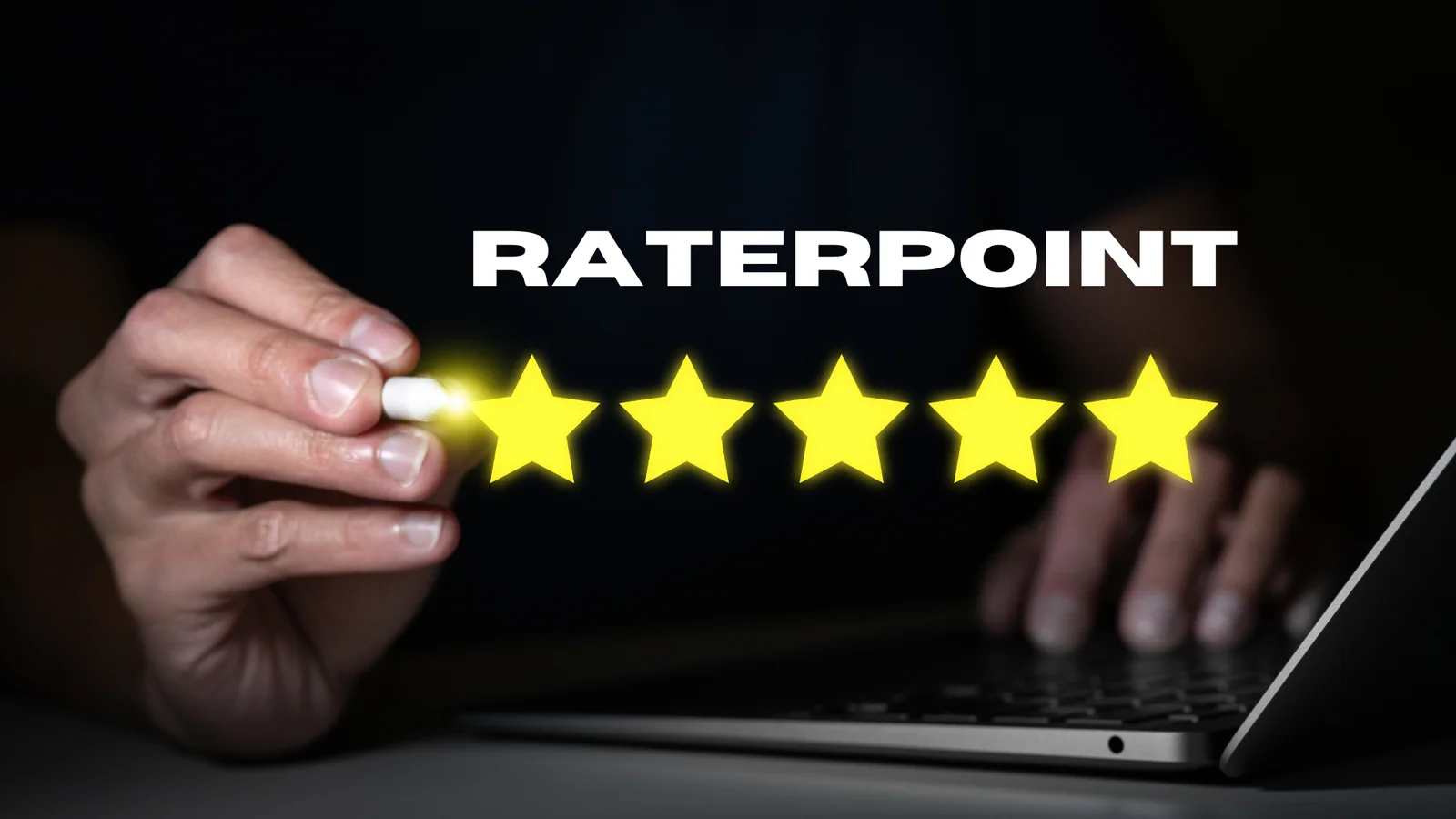In the make–or–break digital era, it is the emergence of terms or concepts that capture the imagination and promise of transformational innovation. ‘Raterpoint’ is one of such terms which has been steadily picking up pace in terms of use. Although it might seem like a buzzword at first, Raterpoint is one nuanced and multifaceted idea that is resonating very much in today’s connected world. With technology continuing to develop, businesses, educators, healthcare providers and creators are looking for tools to become better at measuring performance, quality and impact.
It is much more than a metric, Raterpoint is a complete evaluation framework that allows for clarity and precision in the act of evaluating everyone from a coconut to a city, from a design to a company. This article discusses what Raterpoint is, its applications and their respective industries, why Raterpoint is gaining grounds in most industries and in the foreseeable future and why it will become the cornerstone of modern innovation.
What is Raterpoint?
To understand Raterpoint, let’s learn how to break it down into the essential components. What Raterpoint actually refers to at its root level is a central, metric or reference point, which is used to represent the assessment, rating or benchmarking of something within a system. It can be used whether in the business area, in technology, in education or entertainment. Raterpoint represents a guiding framework that determines quality or impact standard, or a standard of performance.
Just like the orienteering, it is a digital compass that guides stakeholders in a maze of complicated systems with particular evaluation criteria. Raterpoint is inherently holistic and unlike traditional metrics is not singular look aspects. Its scope stretches across the multiple dimensions of a subject, to supply rich insights that can help drive decisions, strategy, and innovation.
The Origins of Raterpoint
Raterpoint Originated from the need for ample and scalable evaluation frameworks in the digital era. The growth of data has been exponential, and with the growth of machine learning and artificial intelligence, traditional evaluation methods have quickly become overwhelmed with the complexity of today’s systems. This led to a demand for a more robust and adaptable framework, which is what Raterpoint attempts to fulfill.
Originally in use in niche fields like user experience testing, software quality assurance and others, Raterpoint has since infiltrated various industries. Because of its versatility and adaptability, it has become a cornerstone used by organizations attempting to achieve operational excellence and deliver value to their stakeholders.
Applications of Raterpoint Across Industries
Technology and Software Development
They use it to assess things such as how well a feature works, how satisfied the end user will be, and how easily the overall application will scale. With Raterpoint integrated within the development life cycle, teams will identify weaknesses early on, optimize performance and make sure the final product corresponds to the expectations of the users. Besides, Raterpoint has also turned out to be valuable in the field of artificial intelligence. Accuracy, precision and recall are the metrics that we evaluate our machine learning models on. Raterpoint provides a unified framework to combine these metrics to provide a complete view of model performance, and tell you how to improve.
Business and Marketing
Raterpoint offers businesses a way to measure customer satisfaction, brand perception, and market impact. Also Raterpoint aggregates survey, review, and social media interaction data in order to present a whole market picture, a clear idea of the brand or product’s perception by the marketplace. Raterpoint is used by marketers to fine tune their campaigns, discover areas to focus on, and analyze the effectiveness of their approach. By doing so, they can be more efficiently allocating resources and will get better results.
Education and E-Learning
Raterpoint has also become a very beneficial tool when assessing student performance and an institution’s effectiveness. The difference is that Raterpoint, unlike traditional grading systems, takes into account nonacademic achievement, including creativity, collaboration and critical thinking skills. These platforms analyze student engagement and progress to suggest discipline and intervention activities in order to deliver optimal learning outcome.
Healthcare
Raterpoint assists both hospitals and clinics by helping them benchmark their performance out against industry standards, identify areas for improvement, and improve the quality of care they provide. Furthermore, Raterpoint is important in clinical research. The system aggregates and analyzes data from many sources, and it assists researchers in determining the efficacy and safety of new treatments.
Entertainment and Media
Raterpoint helps streaming platforms analyze viewer behavior and preferences and makes relevant suggestions, based on their habits and interests. Raterpoint helps creators understand what does and does not work in its content through the audience feedback, allowing them to create what their audience expects and pushes their creative boundaries.
The Benefits of Raterpoint
Holistic Evaluation
The primary advantage of Raterpoint is that it takes an holistic approach. It sums the dimensions in which we are considering a subject, giving a more complete and correct insight into the problem territory than traditional metrics.
Scalability
The idea behind Raterpoint was to be able to scale with the needs of an organization. It can be used to evaluate just a single project or an entire portfolio of projects, adapting easily to a spectrum of complexity and scope.
Data-Driven Insights
Raterpoint aggregates and analyzes large volumes of data to provide us actionable insights to inform decision making. As a result, it is an invaluable tool for organizations trying to stay ahead in competitive markets.
Flexibility
Raterpoint’s flexible architecture is able to be customized to any industry and use case. The application of this self scaffolding is versatile, staying relevant in a variety of applications.
Challenges and Considerations
Yes Raterpoint has a number of benefits, but not without some problems. A Raterpoint system needs to be carefully planned, with a full comprehension of the factors being rated. Organisations also have to make sure that their data sources are reliable and bias free, otherwise the obtained results will be skewed. One more thing to think, is a possibility for over reliance on Raterpoint metrics. These are great metrics, but they should augment and not supplant human judgment and expertise.
The Future of Raterpoint
Technology will keep evolving and so will what Raterpoint means. Predictive analytics, real time data processing, and augmented intelligence; are likely emerging trends expected to boost it’s capability; thus by far more powerful and versatile. In addition, given that industries are progressing toward closer interconnection, Raterpoint may be able to become a universal standard for rating and benchmark. It may lead to more collaboration and innovation between sectors and, if so, create overdue progress and growth globally.
Conclusion
Raterpoint takes another big step forward in the evaluation and improvement of complex systems. Thanks to this approach, scalability of the system and informative data that it provides, it is an indispensable component of a wide range of industries. Although there is still challenges, Raterpoint is still capable of driving innovation and delivery of excellence.
Into the era of interconnectedness and rapid technological development, Raterpoint will have more of its impact. When you accept this transformational idea, organizations and people alike can access new possibilities and attain increased success. From helping design strategic decisions, to enabling operational efficiency, to sparking innovation, Raterpoint is the very symbol of what is possible in a world constantly changing.
